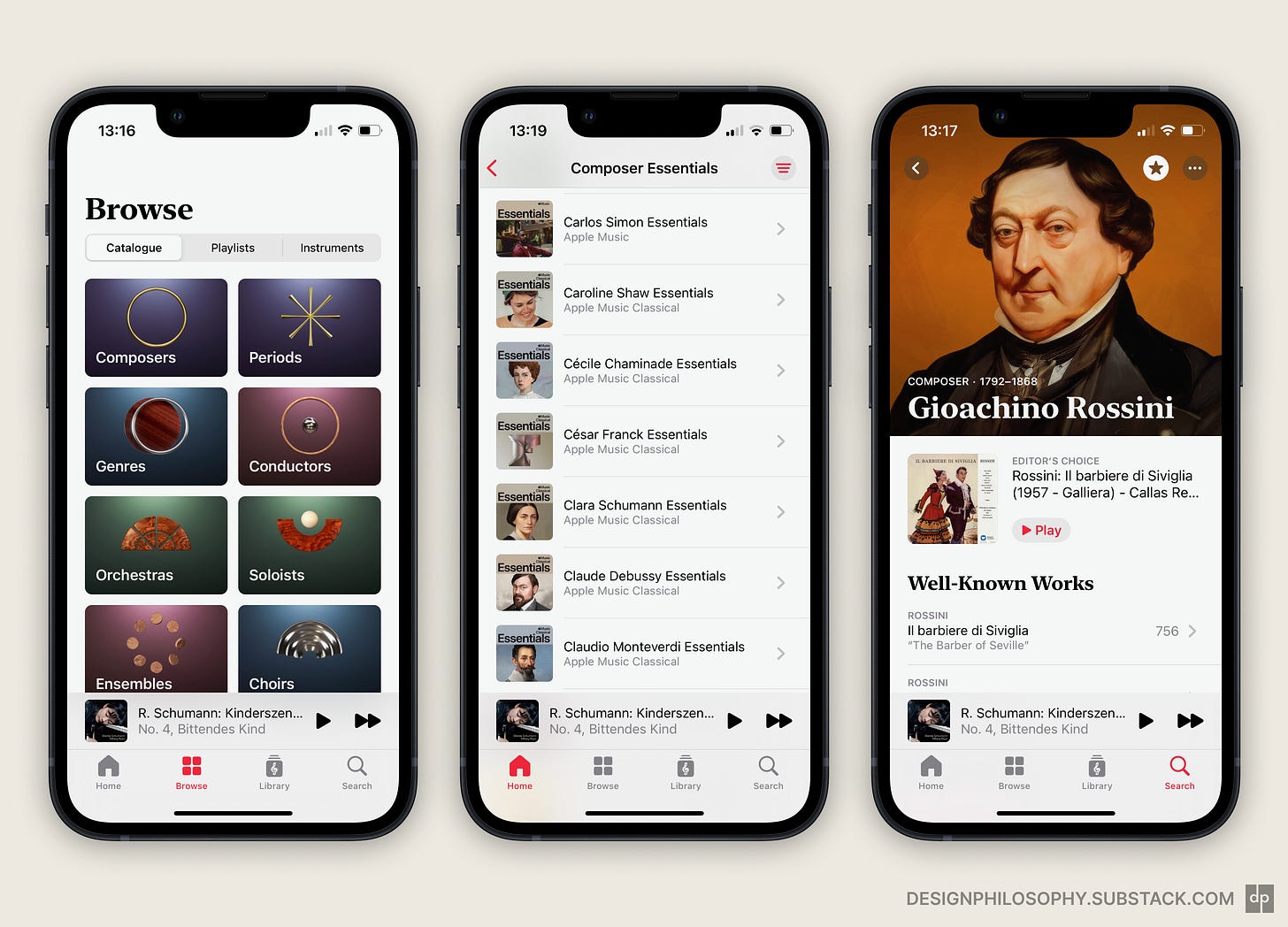Apple Music Classical: Liszt and More Lists
A dedicated streaming experience for classical music makes its debut
As a classical music aficionado, I was pretty elated when the dedicated Apple Music Classical app finally launched last March. After years of building a digital music library on top of streaming services, a dedicated experience for the genre was long overdue.
Why does classical music need a customised experience?
Classical music needs a tailored user experience (UX) because it works differently to most other music genres. This is because many of the most popular composers predate music recording technology and so music was only heard when performed live.
So whereas today’s mainstream music comes in the form of official studio recordings by the artist, classical music came in the form of written sheet music which instructed musicians on how to perform it. Once recording technology arrived, plenty of solo musicians, orchestras, and other ensembles were able to create studio recordings of their performance of that that piece. For example, Franz Liszt’s 19 Hungarian Rhapsodies totals 394 recordings on Apple Music.
This means that when it comes to discovering and listening to classical music, there are many more ways to categorise and search for it than with other genres. You have multiple Artists (including the Composer, Conductor, Orchestra, etc.) as well as Albums that can contain recordings of several different pieces of music by several Composers. It can get complicated pretty quickly.
How does Apple Music Classical solve this problem?
Standard music streaming apps such as those from the main players Spotify and Apple Music don’t cater well to the complex structure behind classical music. A company called Primephonic saw this issue and custom designed a classical music streaming experience. Apple bought them in 2021 and in March 2023 released Apple Music Classical (which I’ll abbreviate to ‘AMC’).

There are a lot of things to like about AMC. It provides plenty of very high quality recordings, some of which are exclusive to the platform. The dedicated pages for the different kinds of Artists, such as Composers and Choirs, nudge you to try an ‘Editor’s Choice’ and ‘Latest Albums’. And there’s a high attention to visual detail, with new portraits of famous composers adorning their profile pages.
You can also save your favourite Artists, pieces (or ‘Works’ as AMC calls them), and Recordings and then dive into each one to explore related music. But while this feature allows you to precisely catalogue your favourite music, I see a couple of issues.
First, it doesn’t scale well. Once you’ve added more than a few favourites in each category, you end up with a bunch of dauntingly long and disorganised lists.
Second, once I’m done cataloging my favourites, it’s not clear what I do next or what the app does with that information to tailor my experience. For example, I would really like it if the app prompted me to try a different Recording of a Work I already love. Or if it recommended a lesser-known Composer whose style was similar to one I already liked. AMC doesn’t reduce the choice overload as much as it could do to help me discover new music. Instead, when I feel like a bit of Beethoven, I typically default to the albums I’ve already saved and listened to dozens of times. Which defeats the point a little.
In conclusion
AMC has got the important foundation in place to ensure classical music is catalogued effectively. But there is still work to do to make it into a compelling user experience that goes beyond just creating precise lists of favourites. I’m sure it’s a tantalising overture for what’s to come.






